Contrary to popular belief, six-packs are not only applicable to your favorite type of beer or brewsky 🙂 In this Optima 8020 Redtop review, we’re going to go through the pros and cons of the battery and why you might consider this AGM battery.
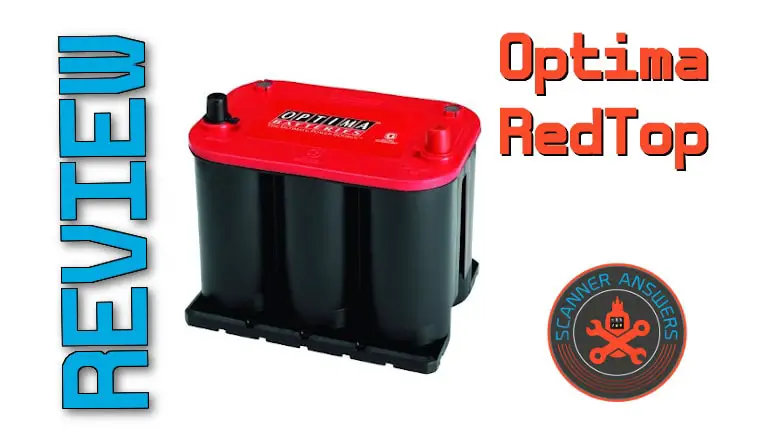
B000MS9VZK
Optima’s 8020 Redtop battery also boasts a six-pack design. Even though you can’t see it directly, Optima’s unique and signature Six-Pack design – which is inherent in all their car batteries – are responsible for the power delivery, efficiency, and reliability of Optima batteries.
What are the types of Optima batteries?
There are generally three types of Optima batteries:
- Bluetop
- Yellowtop
- RedTop
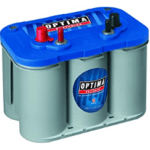
The Bluetop is a starting battery for marine applications. It should never be used as a starting battery and is not applicable for cycling duty, which means it’s not ideal for automotive use. However, if you have an RV or boat, the Optima Bluetop is one of the best money can buy.
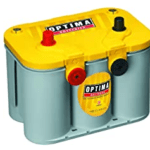
Then we have Optima Yellowtop. It’s a bit costlier than the Redtop, but it’s applicable to vehicles equipped with multiple electric accessories. This includes ambulances, off-road vehicles, and normal cars equipped with modified audio systems. Optima’s Yellowtop is also great for drag racers and race-prepped cars with no charging systems.
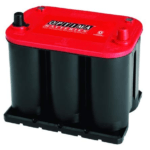
Lastly, the Optima 8020 Redtop, which is a high-performance AGM battery. This is the perfect choice for conventional sedans, crossovers, or SUVs with both diesel and gasoline motors. As long as the vehicle has an alternator, the Redtop is the right choice.
What are the features of Optima Redtop?
No products found.
[su_icon_text icon=”icon: thumbs-o-up” icon_color=”#00a9e0″ icon_size=”46″]Top features of the Optima Red Top[/su_icon_text]- High CCA
- Spill Proof
- Great for cold or hot weather
- Resists vibration
- Maintenance Free
- Last longer than conventional car batteries
- Looks clean
The most compelling feature is the signature Six-Pack design consisting of spirally-wound lead plates. The individual cells are comprised of a pair of 99.9-percent pure lead plates coated with lead oxide. According to Optima, the technique of spiral-wounding the plates has an effect of improving the power output while offering better resistance against vibration.
Using pure lead plates makes the battery more energy-dense for stronger starting power in any type of weather.

Due to the unique design, the Redtop offers 15 times the vibration resistance than conventional batteries. It has a maintenance-free design with up twice the lifespan of conventional car batteries. And since the Six-Pack cell design packs a mean punch, Redtop offers stronger starting bursts and faster recharging as well.
The Optima Redtop also looks better than traditional batteries. If you’re the type of car owner who appreciates a clean-looking engine bay, Optima batteries will give your vehicle the added bling, if you know what I mean.
The 100-percent spill-proof design rocks. This also means the battery can be mounted in any position without sacrificing performance. Optima claims Redtop is designed to withstand hard launches, extreme corners, and daily abuse.
Redtop is rated at 720 CCA (cold cranking amps), which is outstanding for a car battery. Remember, a higher CCA number means greater starting power, most especially in cold weather. If you happen to live in cold or icy climates, Optima Redtop is a sterling choice. (Learn more about car battery amps here)
Are there any Downsides?
But there’s a catch.
[su_icon_text icon=”icon: thumbs-o-down” icon_color=”#fb4a2a” icon_size=”46″]Downsides of the Optima Red Top[/su_icon_text]- Costs more than conventional batteries
- Some warranty issues when purchased online
Optima said the process of spiral winding continuous lead plates is costlier than flat-plate batteries. Of course, this also means Optima Redtop is more expensive than a conventional wet cell/flooded battery, but you ultimately get your money’s worth in terms of quality and dependable performance.
Besides the high cost, another thing that concerned us was the high number of people who ordered the battery online having their battery die after a year of so of ownership. We’ve never had this problem with Optima batteries, but something to be aware of if you plan to purchase the battery online.
Is the Optima 8020 Redtop an AGM battery?
Yes.
There are many types of car batteries, but there are generally two main types of car batteries:
- Flooded (wet cell) batteries
- Valve-regulated lead-acid batteries (VRLA)
Wet cell or flooded batteries are cheaper than VRLA, but it requires constant maintenance to replenish the battery electrolytes. If you’re on a tight budget, flooded batteries are a temp solution, but they’re not exactly the best choice in automotive batteries.
When it comes to VRLA batteries, there are also two types:
- Absorption glass mat (AGM)
- Gel cell
Optima 8020 Redtop is an AGM battery and is known for providing a higher rate of power is short bursts compared to other sealed batteries. This is due to the faster reaction between the battery electrolyte and the thin layer of fiberglass surface mat. According to Optima, the unique glass mat separators – along with the spiral-wound cell design – is the reason for Redtop’s dominance over conventional flooded batteries.
On the other side of the spectrum, gel cell batteries have a silica-based electrolyte solution that works best for deep-cycle or marine applications. And while gel-cell is great for golf carts, boats, and RVs, these types of batteries are more sensitive to extreme hot or cold.
In short, AGM batteries are the best solution for automotive applications. There are other AGM batteries you can buy, but Optima 8020 Redtop is arguably one of the best AGM batteries you can buy.
No products found.
How do I maintain an AGM battery?
That’s the best part about the Optima Redtop AGM battery – it’s essentially maintenance-free! Since the electrolytes are sealed inside the spiral wound glass mats, you don’t need regularly add battery water or electrolytes. In fact, Optima Redtop is designed with convenience in mind. Just set and forget!
Regularly inspect and clean the battery terminals.
You don’t need to buy a special cleaner for this job. All you need is a cup of warm water and a teaspoon of baking soda.
Make sure to inspect the battery terminals at least once a week if you use your car daily. If you notice corrosion on the terminals, use an old toothbrush along with the water and baking soda cleaning solution to remove gunk and corrosion. For older cars with thicker corrosion, it’s easier to clean the terminals if you remove it from the battery post.
Trucker 9000 has been loving his brand new RedTop!
How to change an AGM car battery
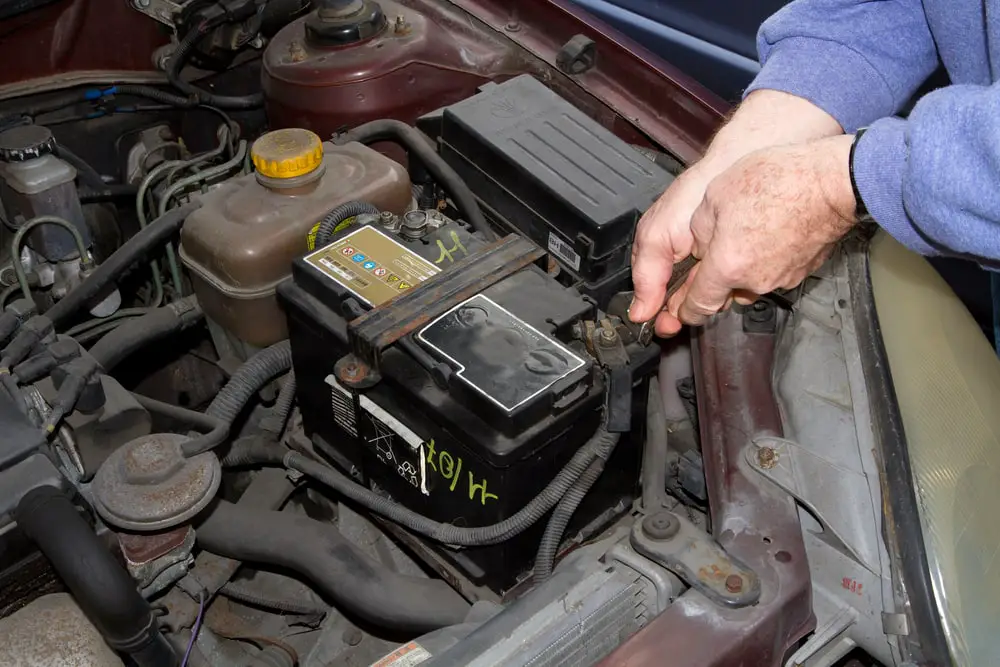
Changing a car battery is pretty straightforward. But with the advent of modern electronics, some vehicles require special training to replace the battery, which holds true for most German-made vehicles like BMW, Mercedes-Benz, or Audi. Your best recourse is to check the owner’s manual. If you’re wary of doing it yourself, there’s no shame in consulting a dealership or professional mechanic.
After you’ve determined the battery is bad and not the alternator, here are the easy steps on how to change a car battery.
Step 1 – Park your vehicle in a safe and level area.
preferably inside a shaded garage. Make sure the engine is OFF and the gear lever is in Neutral or Park.
Step 2 – Determine the location of the battery.
In most cases, the battery is located inside the engine bay. If this is the case, pop open the hood and secure using the hood prop.
But in some vehicles or sports cars, the battery may be relocated to the trunk or under the floorboard. When in doubt, consult the owner’s manual.
Step 3 – Disconnect the battery
Using an open wrench or socket set, remove the negative (-) terminal which is usually marked with a negative sign or a black cover. During this time, make sure not to allow metal objects to touch the battery posts simultaneously. Unless you want to experience an impromptu Fourth of July celebration while you’re working under the hood, never allow your wrench to touch the positive terminal and a metal part of the car body or frame at the same time.
After loosening the nut on the negative terminal, remove the cable and terminal from the battery post using a terminal puller. If you don’t have a terminal puller, gently turn the terminal back and forth while pulling upwards.
You can proceed to remove the positive terminal after removing the negative terminal.
Step 4 – Loose the battery holddown clamp
The next step is removing the retaining system or clamp holding the battery in place. Use a socket set or open wrench to do so. Make sure to set aside all the fasteners and clamps.
Step 5 – Lift out the battery
Now that everything is out of the way, all that is needed is to gently lift the battery away from the cradle. Make sure to apply some muscle since car batteries are heavy as hell. Some batteries have a folding handle for easier handling. You can use that to carry the battery away from the cradle.
Set aside the old battery in preparation for installing your brand new Optima 8020 Redtop.
Step 6 – Inspect cables for build up
Now is the best time to inspect the cables and terminals. If you see a ton of gunk or corrosion, use a terminal cleaning tool or a mixture of baking soda and water to remove contaminants. Make sure the terminals are dry after cleaning.
Step 7 – Insert new battery
The last step is to simply place your new Optima Redtop battery in the cradle. Secure the clamps and make sure the battery is tight and secure.
Make sure to position the positive (+) post with the positive terminal. Install the anti-corrosion washers on both positive (red) and negative (green or black) posts before reinserting the positive terminal BEFORE the negative terminal.
After this, simply tighten everything up and start the vehicle.
Conclusion
The Optima 8020 Redtop AGM battery is one of the best in the market. It’s more expensive than basic flooded car batteries, but the consistent power delivery, spill-proof casing, and 90 minutes reserve capacity makes it a winner in my book.
Sources:
https://www.optimabatteries.com/en-us/redtop-starting-battery
https://www.searsauto.com/car-care-101/different-types-of-batteries-for-your-car